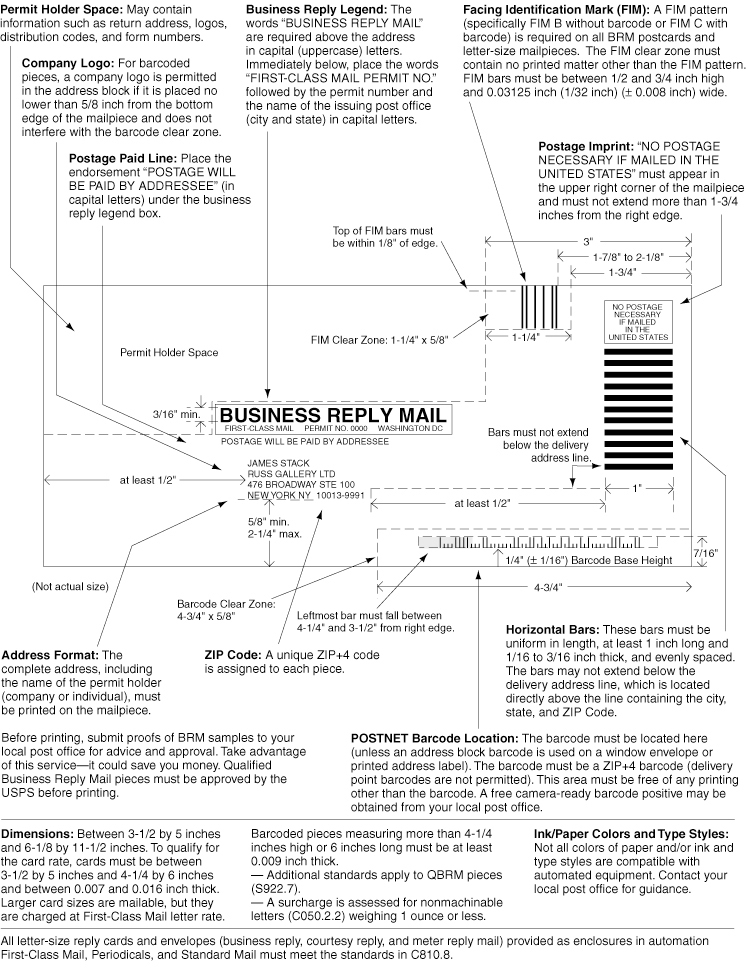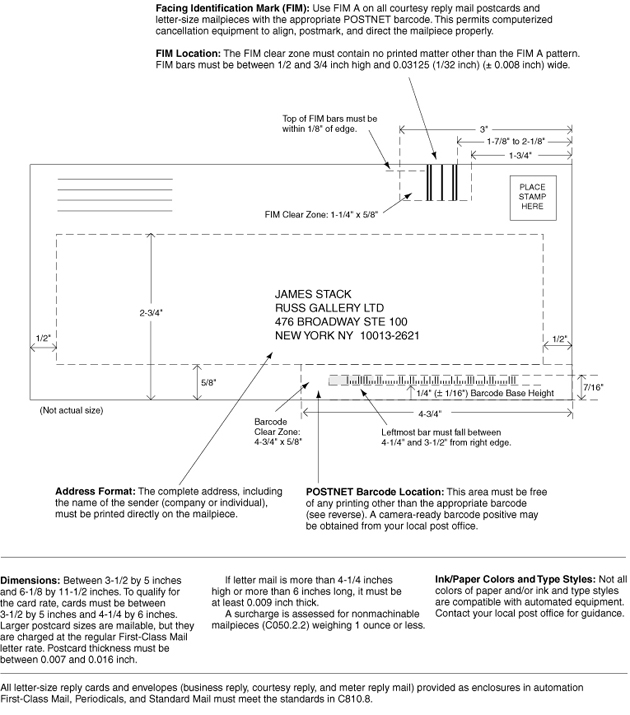![]()
(818) 928-1060
|
PRODUCTS for Every Need |
|
Business
Forms Checks & Security Printing Media Labels (for Operations) Labels (Prime for Products) Labels (Blank Stock ) Equipment Marketing /Sales Literature Stationery & Envelopes ID & Phone Cards |
|
SERVICES for Every Need |
|
Design Services Warehousing & Logistics Mailing & Fulfillment On-Line Capabilities Company Store Print Buying Project Management Data Mgmt/Re-Purposing Label & Tag Imprinting |
| RESOURCES & SUPPORT |
|
Color (CMYK vs. RGB) Software Downloads Barcode Tips & Symbology Omega Forms & Documents Print News / Quik Links Printing Industry Trade Customs |
| ABOUT US |
|
What makes us unique Why Choose Omega How to Contact Omega What Types of Businesses Work with Omega
Did you know in 2007 Omega was the
Learn how we may |
Mailpiece Design Quick Reference
The links below are provided as a quick resource of envelope design considerations. The information provided has been taken from the USPS web site. If you are designing your own mailing components we recommend your visiting the USPS site and reviewing current guidelines as they may apply to your application and use. Those links are provided.
Business Reply Mail (BRM) Business Reply Envelope "BRE"
Courtesy Reply Mail (CRM) Courtesy Reply Envelope "CRE"
| Outgoing Lettersize Envelope |
| Shown below are basic design guidelines. More detailed information may be found at: http://pe.usps.gov/mpdesign/mpdfr_addl_all.htm |

|
OCR Read Area
Clear Space
Return Address
|
| Business Reply Mail (BRM) |
| Shown below are basic design guidelines. More detailed information
may be found at: http://pe.usps.gov/mpdesign/mpdfr_brm_intro.htm
Business Reply Mail (BRM) allows a mailer to distribute preprinted First-Class Mail reply pieces to
customers. The mailer, not the customer, pays the return postage. The mailer does not prepay postage on BRM pieces. The Postal Service
collects postage only on pieces that the customers actually send back to the mailer. This allows mailers to save postage costs on
large volumes of distributed reply pieces when a response is not assured. Business Reply Mail is subject to strict standards for format, markings, and addressing. The templates provided at this web site will allow you to produce BRM that meet all the Postal Service’s standards. For a complete description of BRM format elements
|
 |
| Courtesy Reply Mail (CRM) |
| Shown below are basic design guidelines. More detailed information
may be found at: http://pe.usps.gov/mpdesign/mpdfr_crm_intro.htm Courtesy Reply Mail (CRM) requires your customer (the respondent) to pay the postage before mailing the reply back to you (the sender). CRM is appropriate when the response is more or less assured, such as for billing. Although the customer usually pays the return postage (unless you prepay it by a meter, as in meter reply mail), the pre-addressed postcard or envelope adds convenience and ensures addressing accuracy. The USPS requires no fees or prior authorization to distribute CRM. |
 |
